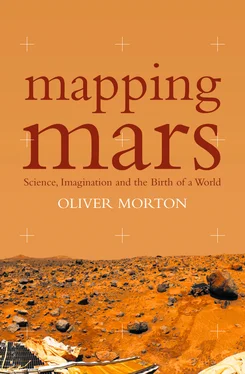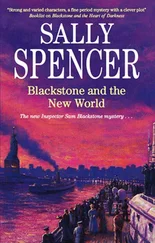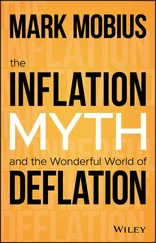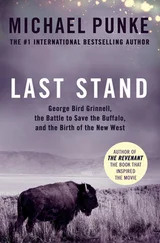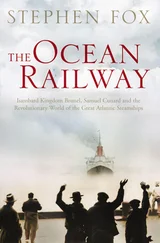We could cast our imaginations wider, to those who have tried to speak for all of Mars. To the astronomers looking at it with their telescopes, measuring all the qualities of light reflected from its surface, seeing seasons and imagining civilisations. Or to the writers inspired by those astronomical visions: H. G. Wells and Stanley Weinbaum, Arthur C. Clarke and Robert Heinlein, Ray Bradbury and Alexander Bogdanov and Edgar Rice Burroughs. Their imaginations took a point of light and turned it into a world of experience. But their Mars was never this one, the one which we only saw – which we could only ever see – after our envoys left the earth and went there.
Only after our spacecraft reached its orbit could we see Mars for what it is, a planet with a surface area as great as that of the earth’s continents, all of it as measurable, as real as the stones in the pavement outside your door. After millennia of talking about worlds beyond our own, of heavens and hells and the Isles of the Hesperides, humanity now has such a world fixed in its sights, solid and sure. For the moment it is a world of science, untouchable but inspectable and oddly accessible, if only through the most complex of tools. But unlike the other worlds that scientists create with their imaginations and instruments – the worlds of molecular dynamics and of inflationary cosmology and all the rest of them – this one is on the edge of being a world in the oldest, truest, sense. A world of places and views, a world that would graze your knees if you fell on it, a world with winds and sunsets and the palest of moonlight. Almost a world like ours, except for the emptiness.
This book is about how ideas from our full and complex planet are projected on to the rocks of that simpler, empty one. The ideas discussed are mostly scientific, because it is the scientists who have thought hardest and best about the realities of Mars. It is the scientists who have fathomed the ages of its rocks, measured its resemblance to the earth, searched for its missing waters and – always – wondered about the life it might be home to. The stories they tell about the planet must have pride of place. But there are artists in here too, and writers, and poets, and people whose dreams take no such articulated form, but still focus themselves on the same rocks in the sky. They illuminate Mars; Mars illuminates them.
It’s common to imagine that the human story on Mars will only start when humans actually get there, when they stand beneath its dusty sky and look around them at its oddly close horizon. I don’t know who those people will be, or when they will get there, or where on the planet they will first set their feet. But I know that for all their importance, they will not be a new story’s beginning, rather a new chapter. Their expectations and hopes are already being created on the earth today, by the people in this book; the process of making Mars into a human world has already begun. And I know that their landing site is somewhere on the map in front of me, already charted, if not yet chosen.
Back to the maps, then; in particular to the 1:15,000,000 shaded-relief map of the surface published by the United States Geological Survey, its three sheets fixed to my office wall. It represents the planet as well as any single image could. But it’s not just the representation of a planet. It’s the embodiment of a process, a process that forged links between far-off Mars and the cartographers’ drawing board point by point, feature by feature. It embodies links of reason and technology that ran through the cameras of now-dead spacecraft millions of kilometres away, and through the minds of the men who designed and controlled those cameras. Links that ran through empty space, carried by the faintest of radio waves, and through the great dishes that picked up those signals, and through the computers that wove them back into images. Links that ran through the eyes and minds and hands of the people who assembled the pictures produced by that great scientific adventure into a world they could see in their minds and draw on the paper in front of them, a world precise and publishable.
The maps themselves tell no single story. But the people who put those links together with technology and craft, mathematics and imagination – they have a story, one that lets the maps and the planet they are tied to come to life.
Where to begin to write about Mars? With the making of the maps.
‘Now when I was a little chap I had a passion for maps. I would look for hours at South America, or Africa, or Australia, and lose myself in all the glories of exploration. At that time there were many blank spaces on the earth, and when I saw one that looked particularly inviting on a map (but they all look that) I would put my finger on it and say, “When I grow up I will go there.” The North Pole was one of these places, I remember. Well, I haven’t been there yet, and shall not try now. The glamour’s off. Other places were scattered about the Equator, and in every sort of latitude all over the two hemispheres. I have been in some of them, and … well, we won’t talk about that. But there was one yet – the biggest, the most blank, so to speak – that I had a hankering after …’
Marlow in Joseph Conrad, Heart of Darkness
And then, as they sat looking at the ships and steamboats making their way to the sea with the tide that was running down, the lovely woman imagined all sorts of voyages for herself and Pa.
Charles Dickens, Our Mutual Friend
Maps of the earth begin a short walk from the flat where I live. Go down the High Road, up Royal Hill towards the butcher’s, left along Burney Street and then right on to Crooms Hill. At the corner, if you care for such things, you can see a blue plaque of the sort with which London marks houses where people who have made a significant contribution to human happiness once lived. In this case, it was the poet Cecil Day Lewis; as you climb the hill, you’ll pass another one marking the home of Benjamin Waugh, founder of the National Society for the Prevention of Cruelty to Children.
Near the top of the hill sits a grand (but plaqueless) bow-fronted white house, called simply the White House. Walk round the White House’s walled garden, down a little alleyway and through a gate in the high brick wall on your right, and you emerge into Greenwich Park. To your right, the beautiful semicircle of the rose garden; to your left a steep path lined by trees. And as you walk out on to the grass, London spread at your feet. As views go, it’s not particularly extensive – the horizon is nowhere more than twenty kilometres away and in many directions much closer – but it’s vast in association. The once imperial cityscape is woven from threads that stretch throughout the world.
Across the river to the east sits the squat black-glass bulk of Reuters, information from around the globe splashing into its rooftop dishes. Upstream and on the near side sit the long, low workshops where for more than a century men have made undersea cables to tie the continents together. New skyscrapers devoted to global businesses sit in the redeveloped heart of the docks that used to handle the lion’s share of the world’s sea trade. Within the park itself there are plants from every continent except Antarctica. At its foot sits the old naval college, where generations of Britannia’s officers, my late father included, learned to rule the waves.
Through it all the Thames runs softly, looping around the Isle of Dogs, a local feature leading, as Conrad says in Heart of Darkness , ‘to the uttermost ends of the earth’. Little sails down this umbilicus of empire now – but above it the new trade routes of the sky are sketched out by aircraft arriving and departing from London’s four airports, carving their way through the air we all breathe and the stratosphere we shelter under. To the west the Thames beneath them is still daytime blue; to the east it is already evening dark.
Читать дальше
